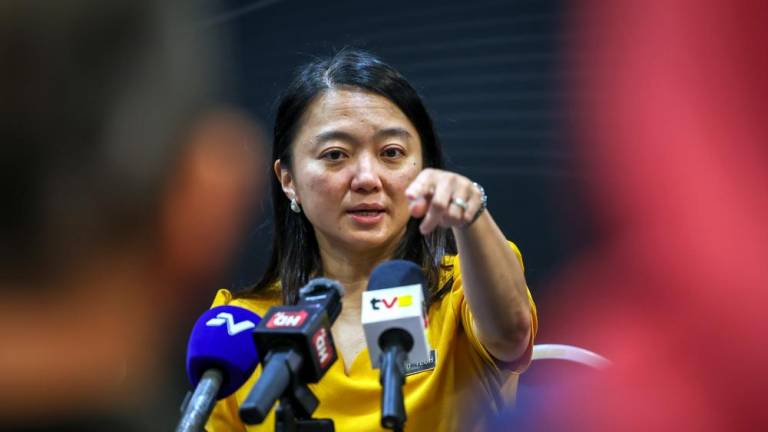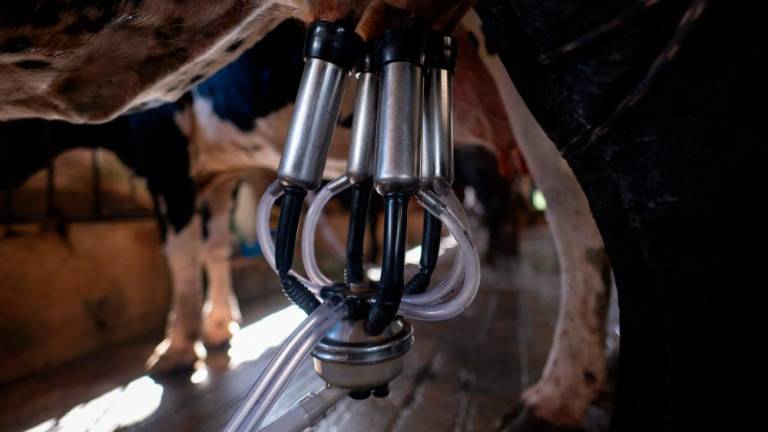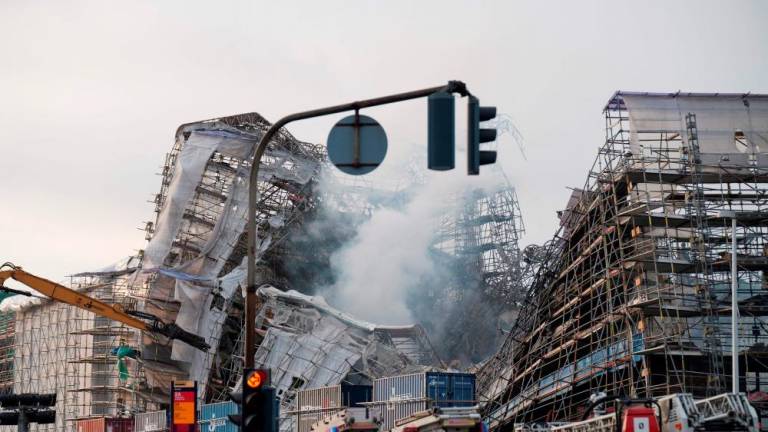RECENT news reports about 20,000+ Covid cases among children and 20+ school clusters have raised alarm and concern among many, especially parents.
With the surge in Covid cases nationwide and worldwide, it looks like the battle with the virus will be a long haul as expected.
Even though the long-awaited vaccines are now available and will be administered to all Malaysians soon, it is unlikely that we will be out of the woods in the near future.
What is more, the recent emergence of more contagious and dangerous new variants, and mutants only makes the battle more formidable and the future more uncertain.
Perhaps, it is time for all Malaysian stakeholders in education to learn from the past year and seriously rethink outside the box, to plan for the re-opening of schools, if and when it does happen in July, as announced.
Based on what we have learned since March 2020, we have to start rethinking with the following premises in mind:
1) We cannot assume that the pandemic will end soon – even with the arrival of vaccines and the attainment of herd immunity – be proactive and prepare for the long haul;
2) We cannot impose complete shutdown of schools for the long term and assume that most of our students are able to learn effectively online, or that online learning can supplant face-to-face learning in schools;
3) We must change our mindsets to take this crisis as an opportunity to remodel schools and transform education in schools in the real sense;
4) We must take steps so as not to subject the 2021 cohort of Sijil Pelajaran Malaysia (SPM), Sijil Tinggi Persekolahan Malaysia (STPM) and other examination-class students to the same predicament of their 2020 counterparts;
5) We must analyse the results of the 2020 SPM and STPM examinations to identify knowledge gaps, which may provide useful information for the replanning and adjustments of school curriculum and tertiary education programmes.
Thus far, complete shutdown of schools seems to be the favourite solution since March 2020, even at times when circumstances were not as dire as March this year when schools reopened briefly, much to the chagrin or even shock of many.
My point is, during the intermittent periods of school opening in that year, plans could have been in place to remodel schools to allow examination-class students more access to classroom learning, with other students attending classes on a rotational basis, as this writer had advocated in April last year.
Will the MoE (Education Ministry) be willing to try this model when schools are deemed safe to reopen later?
Not too long ago, Sibu succeeded in getting the permission to have their pupils attend schools on a rotational basis. Some independent Chinese schools in Peninsular Malaysia did the same sometime last year.
One of them had sufficient resources to divide an examination class of over 40 students into two, with half of them attending the class, while the other half following the same lesson simultaneously in another classroom via a large television screen. This was done on a rotational basis.
If I remember correctly, schools in Germany also implemented rotational schooling since August last year. These were all attempts to ensure social distancing in an over-crowded classroom or school.
Without such measures, schools must surely be the most crowded “public” place – by today’s standard – other than the morning and night markets.
It is time the MoE seriously thought about how to implement rotational schooling as a new norm, to reduce crowding in classrooms and schools.
As announced by the MoE earlier this year, the complete shutdown of schools nationwide for months on end will not be repeated this year.
Is this good and comforting news for the parents and even teachers? Probably not, especially in schools with high enrolment of one to two thousand students or more, and classrooms with more than 40 students, which is not uncommon in many vernacular schools.
Thus, rotational schooling is certainly worth serious consideration if we want to reduce exposure to viral load, avoid crowding and maintain social distancing.
MoE has talked about plans to build more classrooms or provide better internet access and devices to schools and students, but all these involve high cost and are not achievable in a short time.
Relying on the PdPR (home-based learning) guidelines and the less-than-adequate DidikTV programmes is certainly no solution too for the majority, as we have learned.
Should we then continue the hype of online learning and lull ourselves into believing that it is indeed the best and only solution, regardless of what survey data have told us about the lack of accessibility to devices and broadband among the majority of our five million plus students in schools?
The ad hoc distribution of 150,000 devices will certainly not help close the digital divide between the haves and have-nots.
In fact, the majority of students who have missed out on learning during the school shutdown last year were not confined to those in the B40, they also included most of the M40. Unfortunately, these parents have no voice, their complaints are seldom, if ever heard.
Frankly, to say that the public is disappointed with the lack of foresight and planning by our MoE is an understatement.
If only they had heeded opinions and suggestions from various stakeholders in the past year, they could have acted proactively to minimise disruption in schooling, and be better prepared this year.
This writer had advocated that MoE revolutionise and transform teaching-learning in schools, to remodel schools for the long term.
I would like to reiterate these ideas:
1) In a worst-case scenario, without any better alternatives in sight, students should go to schools on alternate days or on a rotational basis, to reduce class size for social distancing. This sounds unthinkable, even unacceptable to many but desperate times require desperate measures.
Each class can be split into two groups with the teacher repeating the same lesson to them on two separate days. This way, students can at least learn something in schools, albeit maybe half of what is supposed to be learned in the syllabus.
Otherwise, as has happened last year, without an inclusive online and e-learning strategy, even with the much vaunted PdPR and DidikTV, majority of the students are whiling away their time at home.
2) All is not lost in the above scenario as learning can still be optimised to match the conventional five-day classroom teaching if teachers are able to use blended learning and the flipped classroom approach effectively.
Lessons are properly planned whereby students are given a variety of learning materials for directed reading or activities and/or assignments to complete at home for one day. This is followed by face-to-face interactions and discussion – where real learning is said to take place – the next day in the classroom.
This way, it is possible to condense two days’ lessons into one day in the classroom and one day at home. The devil is in the details for creative teachers to figure out how best to achieve this goal. Needless to say, now is actually the time to revolutionise and transform teaching-learning for the long term.
The MoE should have made plans to upskill teachers for online and e-learning, not only in terms of technology but more so in pedagogy.
Master teachers should have been identified to help develop content in PdPR to build a repository or library of resources (for example sample lesson plans) for e-learning and online learning to support blended learning and the flipped classroom approach, which can effectively improve the quality of learning, and at the same time reduce face-to-face classroom teaching through a rotational schooling system.
3) From April last year till now – more than one year later – if only each class teacher has collected detailed information about his students’ access to devices and broadband, such vital information can now be used to reorganise and reshuffle all classes: Students with adequate access to devices and broadband can be regrouped into a class under the tutelage of teachers, who are savvy in both the technology and the pedagogy of online teaching-learning.
These students can opt to stay away from school for online and e-learning from home (PdPR), with occasional face-to-face classroom sessions with their teachers, and practical work in the laboratories.
They can free up physical space in the classroom for their classmates, who have no means for engaging in online learning, to continue with the conventional classroom teaching-learning with other teachers.
The above suggestions are only general ideas which can be mixed and matched, or modified according to differing circumstances in different schools.
Primary and secondary schools are different, and urban schools definitely vary from rural ones. No top down single approach will work for all, one size does not fit all.
How these ideas are to be mixed and matched or optimised will depend on the ingenuity, creativity and problem-solving skills of each teacher under the leadership and organisational skills of the school principal, and his core senior or master teachers.
Schools must be given some degree of autonomy in implementation and operation, perhaps with the oversight and support of state and district education departments.
As for now, students sitting for the SPM and STPM examinations by end of this year are already complaining that they are not well prepared because of the lost year of learning in 2020.
Although the MoE has announced that these examinations will be postponed to February and March 2022, will this deferment help if a plan is not in place to make up for the missed classes and learning during the lost year?
In short, schools must now be remodelled to transform education, not just during this pandemic, but right into the future.
Comments: letters@thesundaily.com













